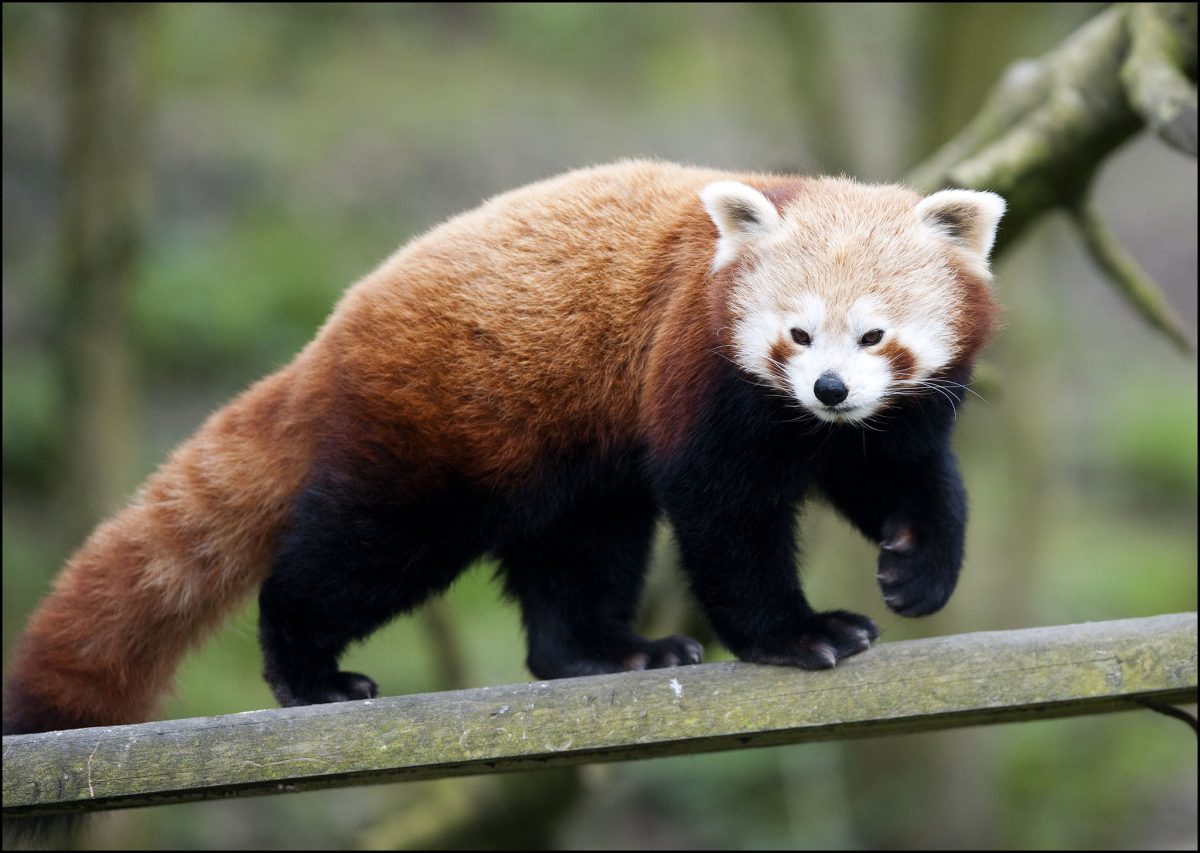Factfile
Where they live
Himalayan region of East India
Habitat
Dense temperate mountain forests at 1,800 4,000m
Size
Length: 50-64 cm, tail length is 28-50 cm
Weight
3-6 kg
Lifespan
Threats
Up to 10,000 exist in the wild and these are under threat due to habitat destruction and hunting for fur. One of their main predators is the snow leopard.
Did you know...
- They were discovered in 1825 and brought to London in 1869
- Red pandas communicate with each other by short whistles and squeaks
- When alarmed they hiss and spit like cats, but can also growl like bears
More about Red Pandas...
Despite their name, red pandas are more closely related to raccoons than giant pandas and have been called a “fire fox” due to their appearance.
Red pandas have long, soft reddish-brown fur on their upper parts, blackish fur on the lower parts, and a light face with tear markings.
The light face has white badges similar to those of a raccoon, but each individual can have distinctive markings. Their roundish head has medium-sized upright ears, a black nose, and very dark eyes: almost pitch black.
The dense fur serves as thermal insulation on snow-covered or ice surfaces. Their long bushy tail with six alternating yellowish red ochre rings provides balance. Their colour provides excellent camouflage against the habitat of moss and lichen covered trees. The legs are black and short with thick fur on the soles of the paws. Their front legs are shorter than the back ones giving it a waddle like walk.
The red panda is a bamboo feeder with strong, curved and sharp semi-retractile claws, which stand inward for grasping of narrow tree branches, leaves and fruit. They cannot digest cellulose and so they must consume a large volume of bamboo to survive.
Their diet consists of about 65 per cent bamboo, but they also eat mushrooms, fruit, roots, acorns, lichen, and grasses and, occasionally, supplement their diet with fish and insects.
They do little more than eat and sleep due to their low-calorie diet.
Like the giant panda, it has a false thumb that is an extension of the wrist bone that is used to hold and strip bamboo.
When descending a tree headfirst, the red panda rotates its ankle to control its descent, one of the few climbing species to do so.
Red pandas are very shy creatures. They are territorial and adults are solitary except during mating season. Both sexes may mate with more than one partner.
A few days before birth, females begin to collect material, such as brushwood, grass, and leaves, to build a nest, which is normally located in a hollow tree or a rock crevice. Between one and four cubs are born and they are completely grey at birth, developing their red colouring in the nest before making their public debut at around 90 days.
How you can help...
Adopt a Panda (Red)!
Help prevent animals from becoming extinct by adopting an animal, you'll be supporting our zoo too!
Gold Adoption
Help support our zoo with a Gold adoption package with an additional zoo admission ticket, and personalised message displayed outside your adopted animalʼs enclosure.
£55.00
Find out moreSilver Adoption
Help support our zoo with a Silver adoption package it includes an adoption certificate, a zoo admission ticket and lots of zoo treats!
£41.50
Find out more











